
Source: International Stem Cell Research
The American biologist George Daly once said, "If the 20th century was the age of drug therapy, the 21st century will be the age of cell therapy!" The emergence of regenerative therapy represented by stem cells and immune cells has opened up a new therapeutic track for chronic disease prevention and treatment, beauty anti-aging, cancer treatment and other fields that are difficult to overcome by traditional medicine! Japan has listed autologous stem cells as the second type of regenerative medicine, in addition to the clinical application of autologous fat stem cells, but also involving autologous bone marrow, synovial, serum stem cells and many other types!
Stem cell family members and their therapeutic focus
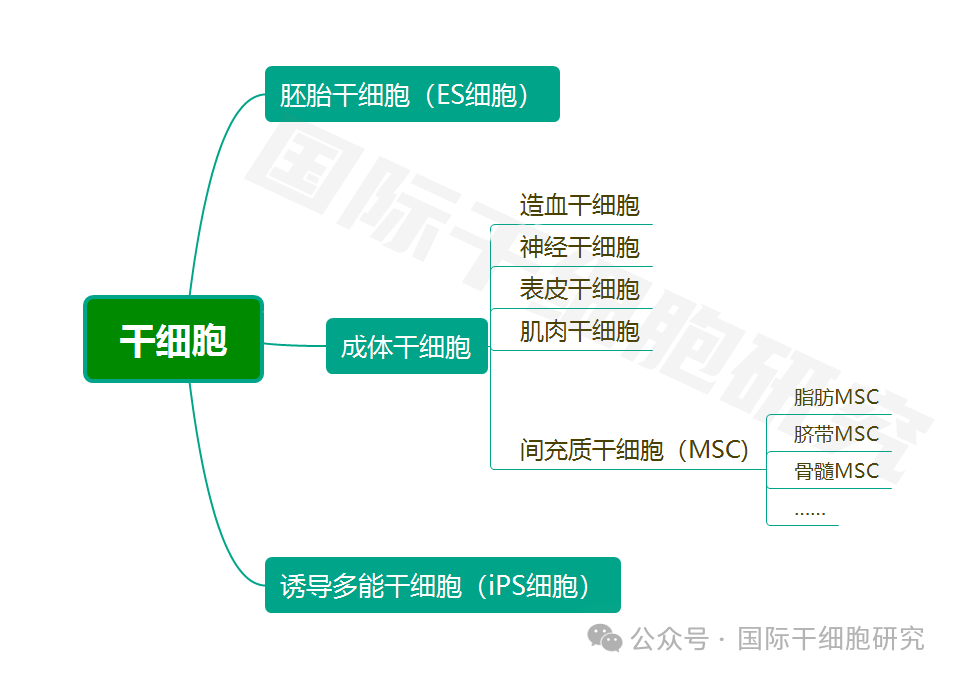
▲Common types of stem cells
Stem cells, also known as "universal cells" and "origin cells", are a kind of non-specific cells with multi-directional differentiation potential and self-replication ability, and are also the progenitor cells that form various tissues and organs of the human body. The body uses the unlimited replication of stem cells to produce a large number of working cells to maintain the normal operation of various tissues and organs in the human body.
Modern research shows that the stem cell family has many members and can be isolated from many tissues such as early embryos, umbilical cord, fat, bone marrow, placenta, and blood.
1 Embryonic stem cells (ES cells)
ES cells are totipotent stem cells isolated from early embryos, with strong self-renewal and extensive differentiation ability, and can differentiate into almost all types of human cells.
ES cells protect and repair organ or tissue damage, and can be used to treat neurological diseases, cardiovascular diseases, liver diseases, diabetes, bone and cartilage diseases, trauma or burns. However, the cells are subject to ethical restrictions and are mostly in clinical research.
2 Mesenchymal stem cells (MSC)
MSC is a kind of adult stem cells with multi-lineage differentiation potential, tissue regeneration self-renewal and immune regulation ability, and it is easy to obtain and isolate, and its common sources include adipose tissue (AT), bone marrow (BM), umbilical cord and placenta.
As of March 2023, more than 1,400 MSC clinical trials have been included on ClinicalTrials.gov in the United States, mainly covering cardiovascular, nervous system, immune system, musculoskeletal and other multi-system diseases.
Figure 1 Clinical application of mesenchymal stem cells in regenerative medicine and cell therapy (by disease category)
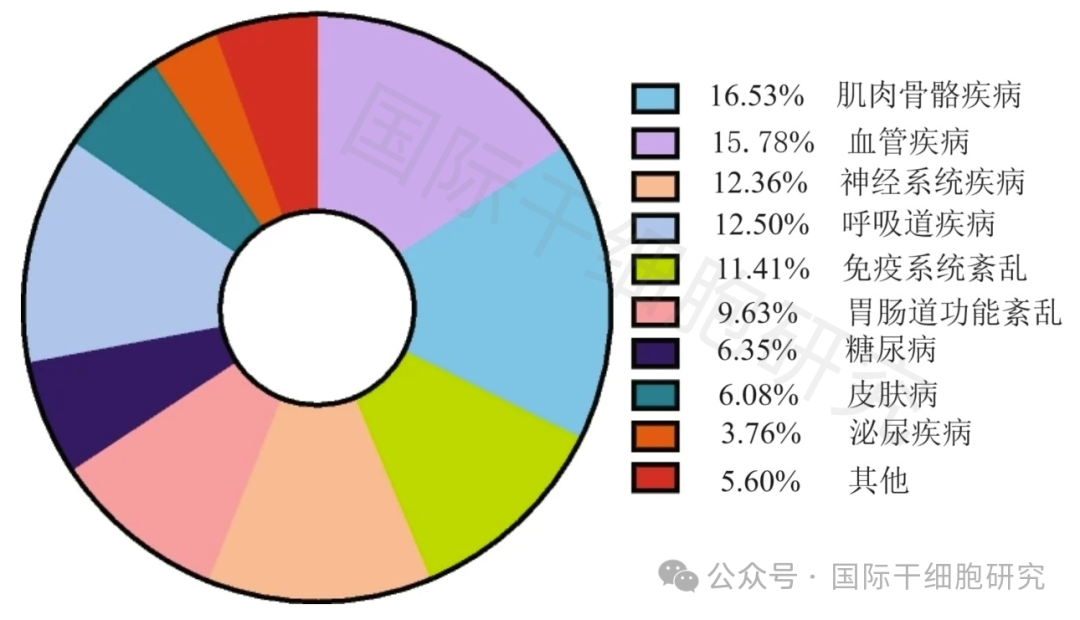
3 Induced pluripotent stem cells (iPS cells)
"iPS cells", also known as "reprogrammed stem cells", are a class of pluripotent stem cells obtained by reprogramming mature cells, which have multi-directional differentiation potential and high proliferation activity similar to embryonic stem cells, and do not involve ethical issues. Professor Shinya Yamanaka of Japan won the 2012 Nobel Prize for his research in the field of iPS cells.
At present, the iPS Cell Research and Application Center of Kyoto University in Japan and Astellas Pharmaceuticals have started the second phase of research on human iPS cells for the treatment of refractory diseases.
Application range of autologous stem cells approved by Ministry of Health, Labour and Welfare
1 Diabetes
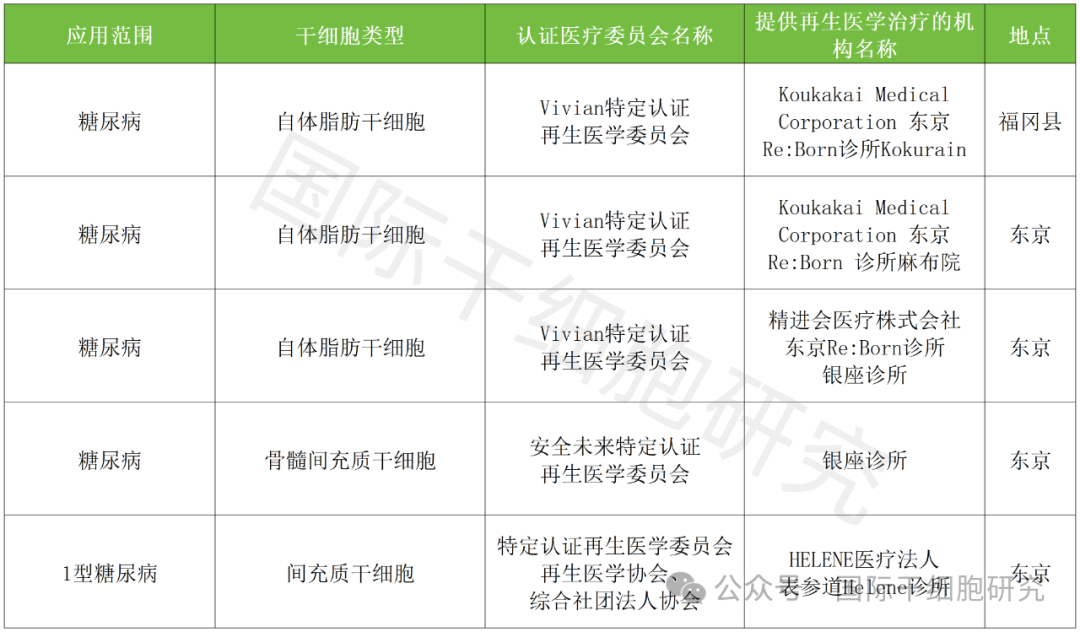
2 Chronic pain
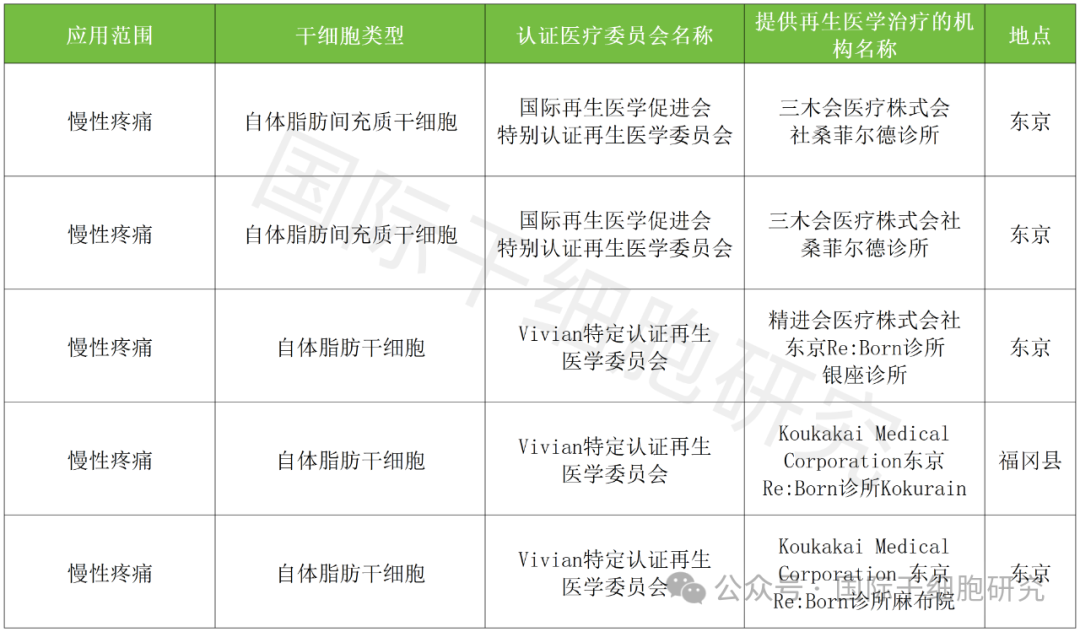
3 Arthritis
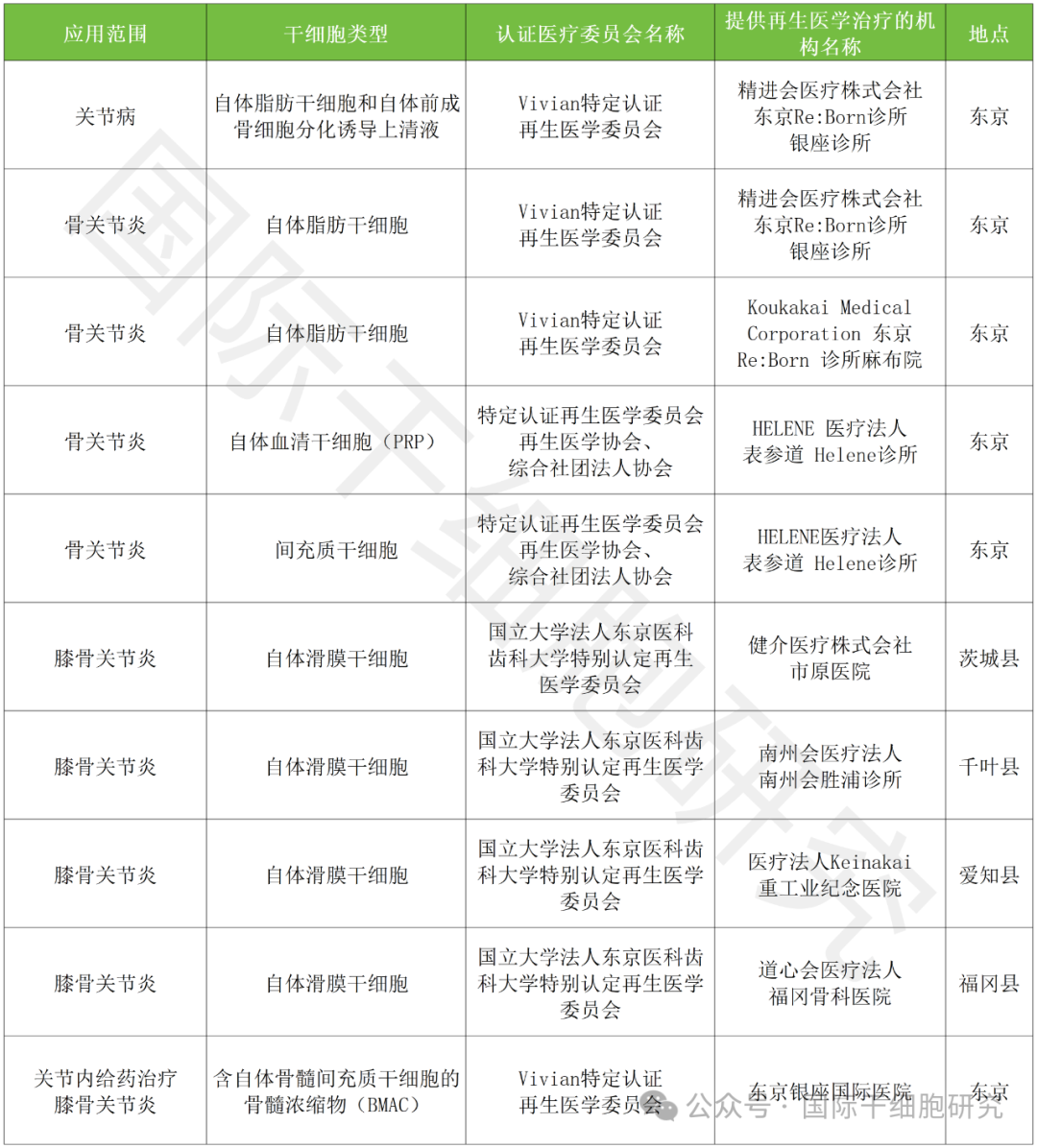
4 Apoplexy
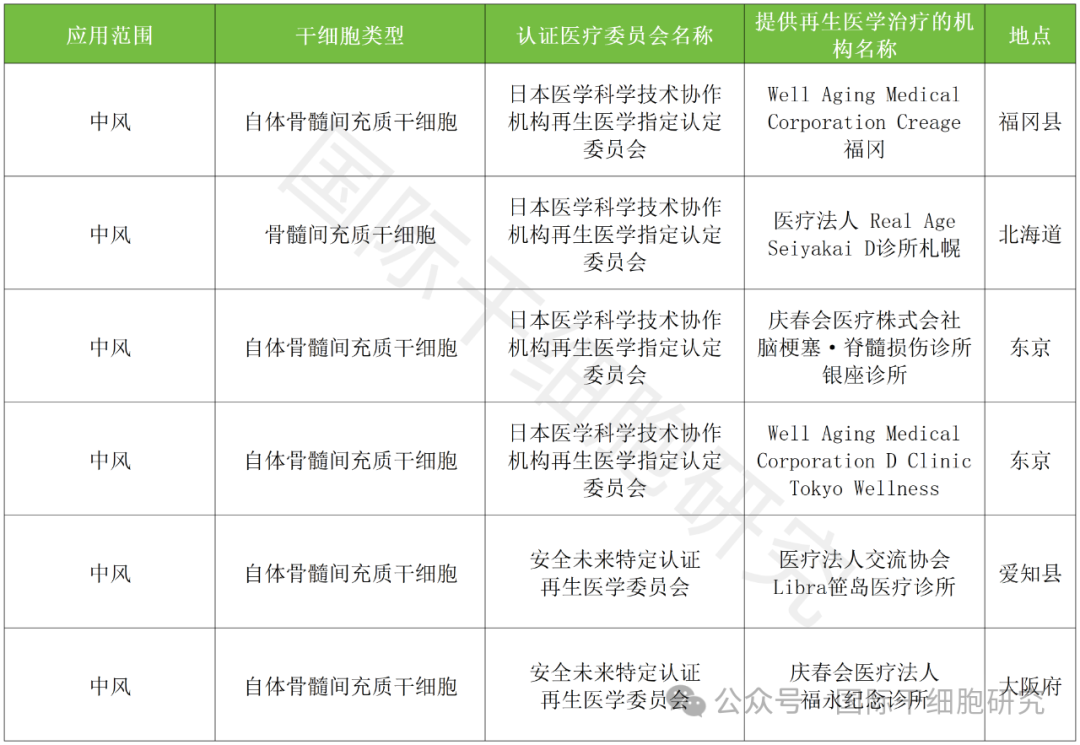
5 Spinal cord injury
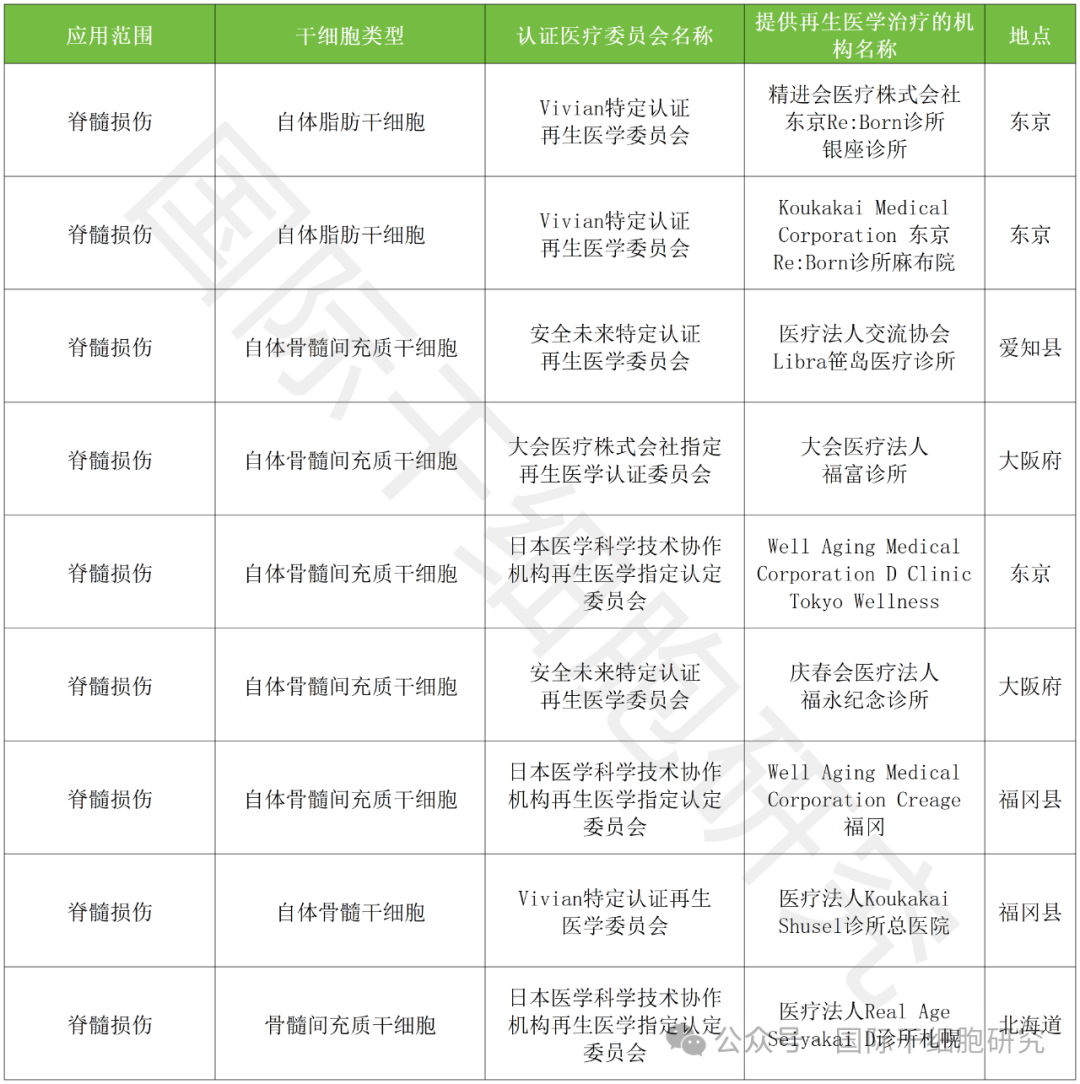
6 Other diseases of the nervous system
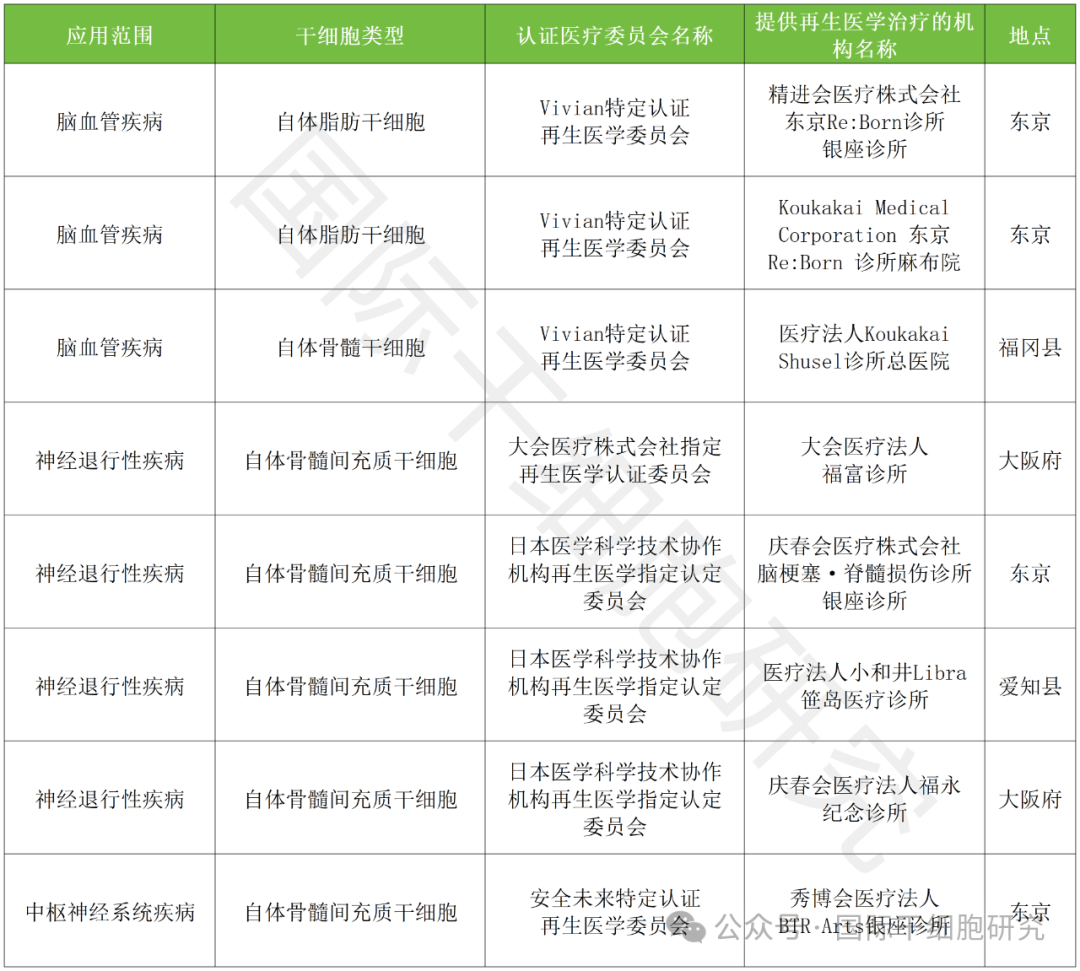
7 Other chronic disease prevention
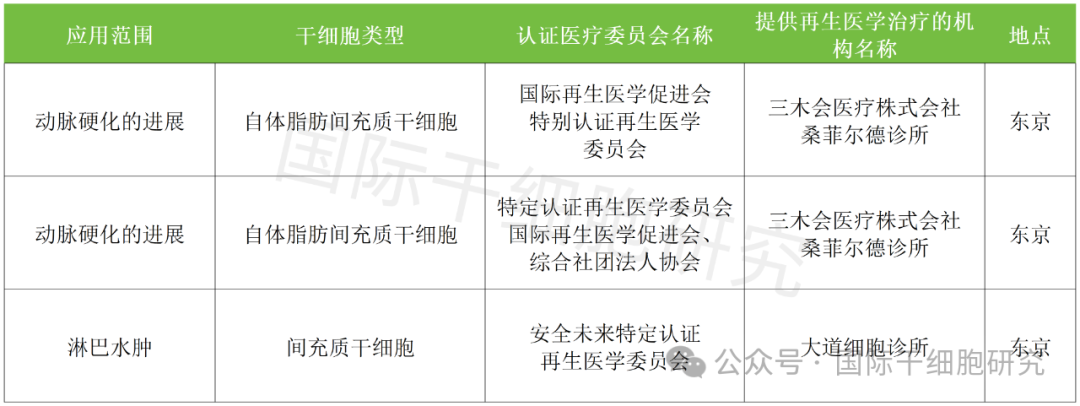
8 Cosmetic anti-aging
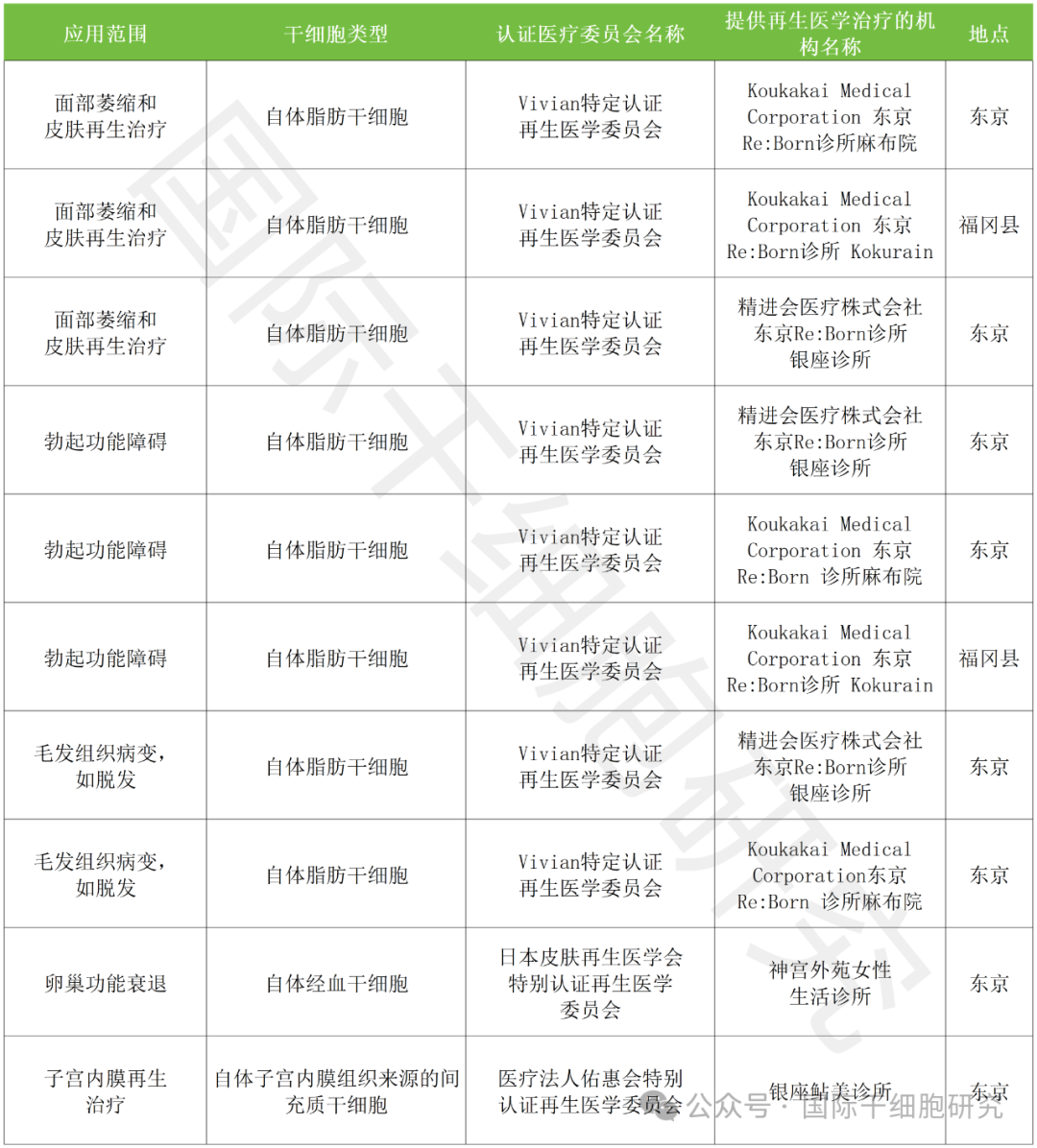
小编寄语
There are many members of the stem cell family, and there are some differences in their characteristics and treatment priorities. Currently, mesenchymal stem cells are the most used in clinical research and application. Japan, as one of the few countries where stem cells have been approved for clinical application, has more types of autologous stem cells approved and a wide range of applications, which is worthy of our reference and reference. At present, there are more than 60 MSC in China, which has obtained a new drug IND from the Drug Review Center of the State Drug Administration, covering osteoarthritis, diabetic foot ulcer, rheumatoid arthritis, stroke. Pulmonary fibrosis, liver failure, graft versus host, psoriasis and many other areas. With the increase in the number of clinical studies, it is bound to promote the development of the stem cell field!